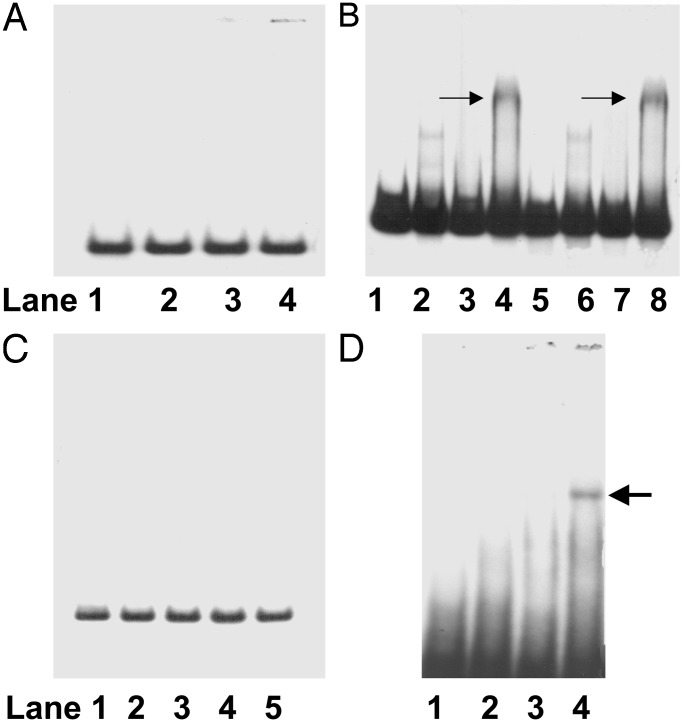Fig. 3.
Representative EMSA for cooperative binding interaction of His6-tagged CPBP (1 μg of protein per well) and nuclear protein (60% ammonium sulfate fraction, 10 μg of protein per well). (A) 5′ end DNA segment (lane 1, free 32P-labeled probe; lane 2, 60% ammonium sulfate fraction; lane 3, His6-tagged CPBP; lane 4, mixture of lanes 2 and 3). (B) DNA segment with the first TATA sequence (lane 1, free 32P-labeled probe; lane 2, 60% ammonium sulfate fraction; lane 3, His6-tagged CPBP; lane 4, mixture of lanes 2 and 3) and corresponding DNA segment with point mutation in the first TATA sequence (lane 5, free 32P-labeled probe; lane 6, 60% ammonium sulfate fraction; lane 7, His6-tagged CPBP; lane 8, mixture of lanes 2 and 3). (C) DNA with the second and third TATA sequences (lane 1, free 32P-labeled probe; lane 2, 60% ammonium sulfate fraction; lane 3, His6-tagged CPBP; lane 4, mixture of lanes 2 and 3; lane 5, mixture of lanes 2 and 3 and postincubation with rabbit polyclonal anti-His6-CPBP antibody). (D) 3′ end DNA segment (lane 1, free 32P-labeled probe; lane 2, 60% ammonium sulfate fraction, 10 μg of protein per well; lane 3, His6-tagged CPBP, 1 μg of protein per well; lane 4, mixture of lanes 2 and 3). Arrows indicate DNA-binding complex.

